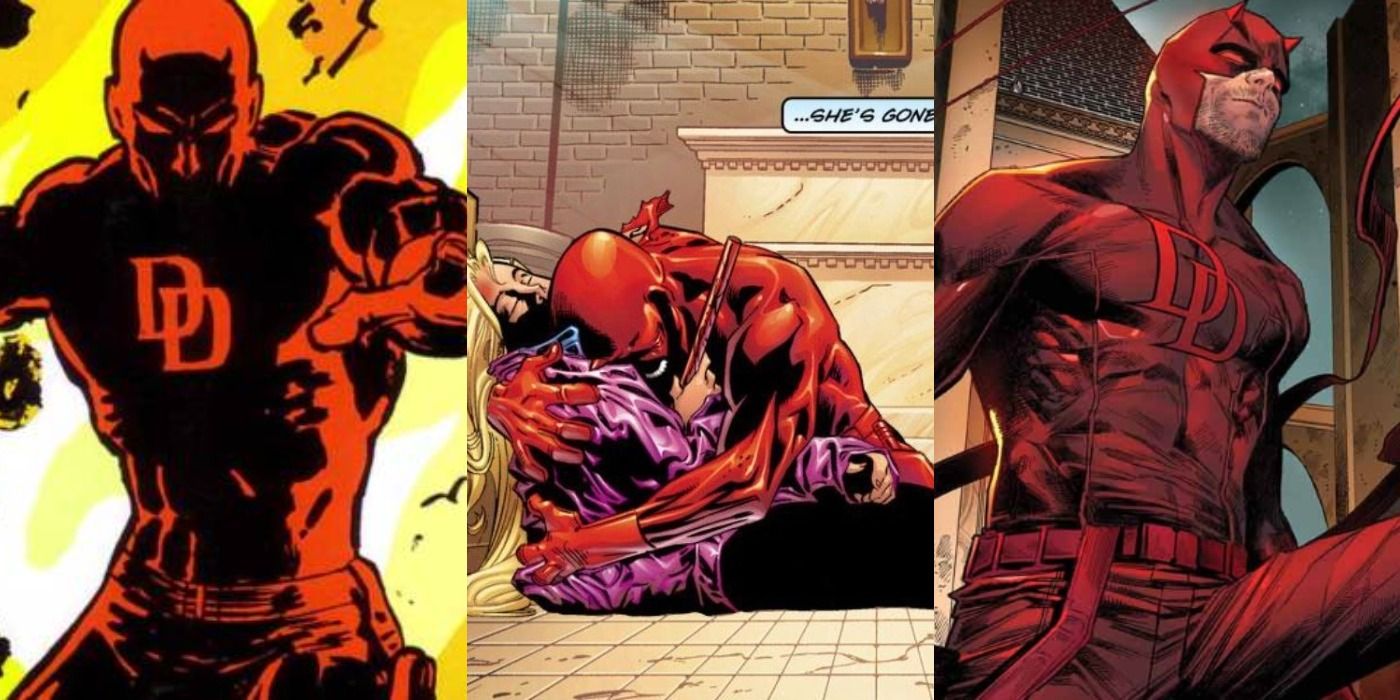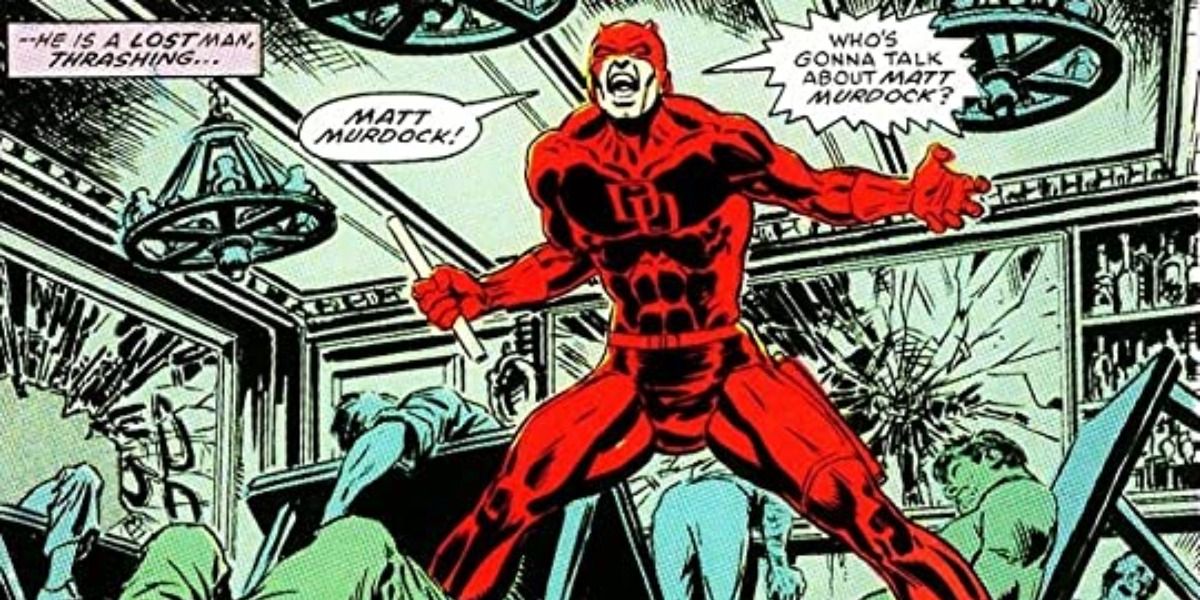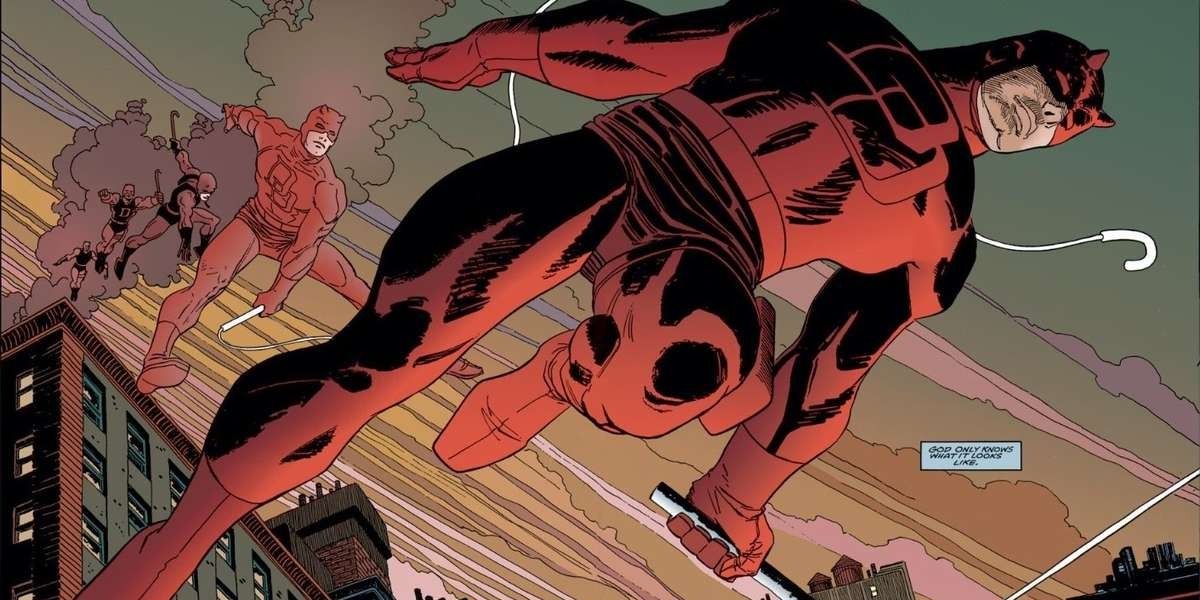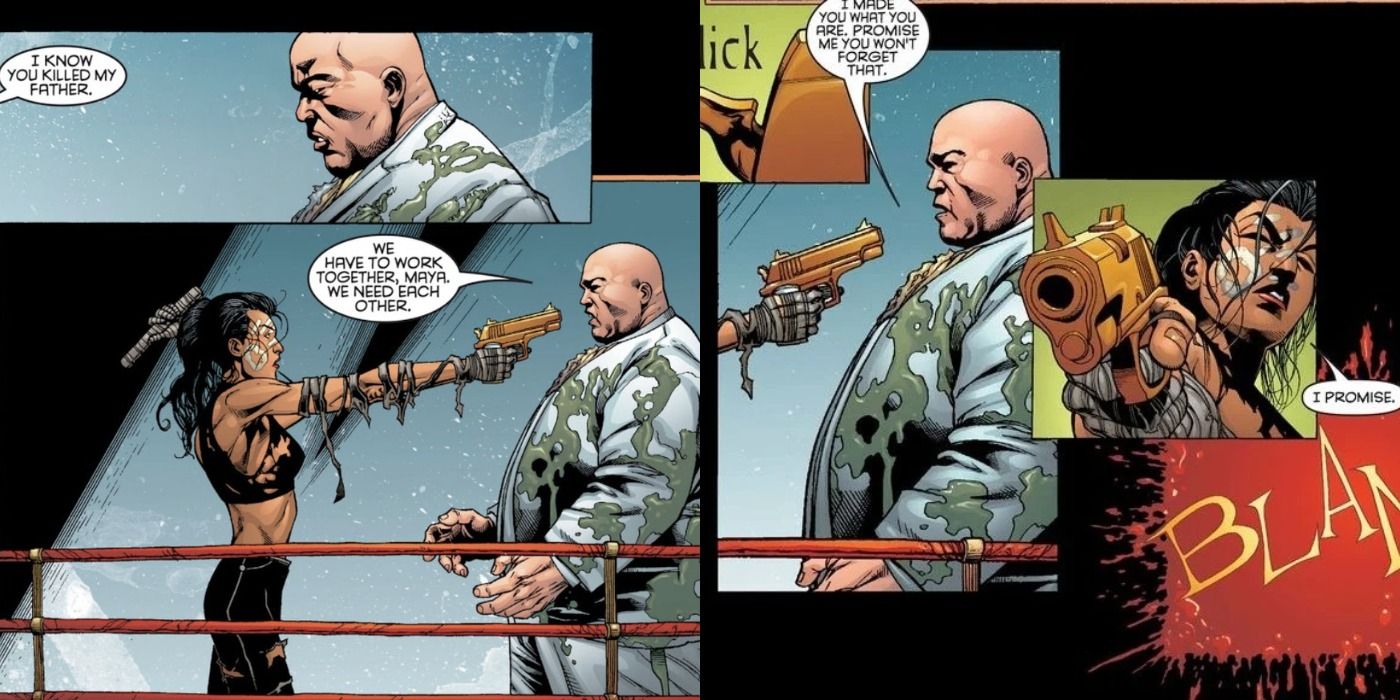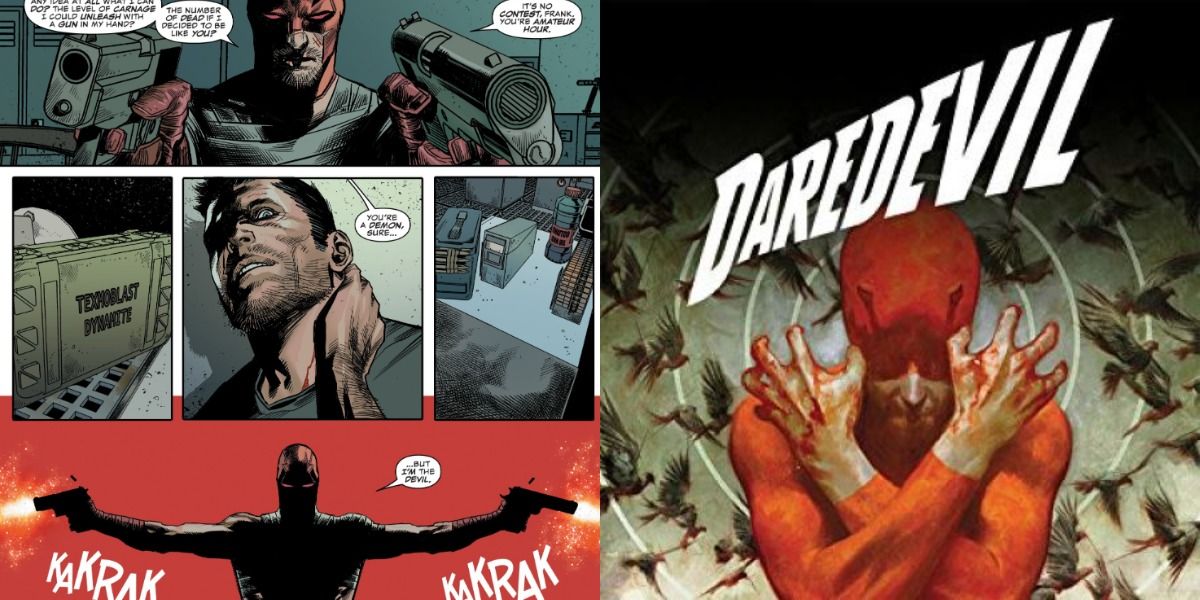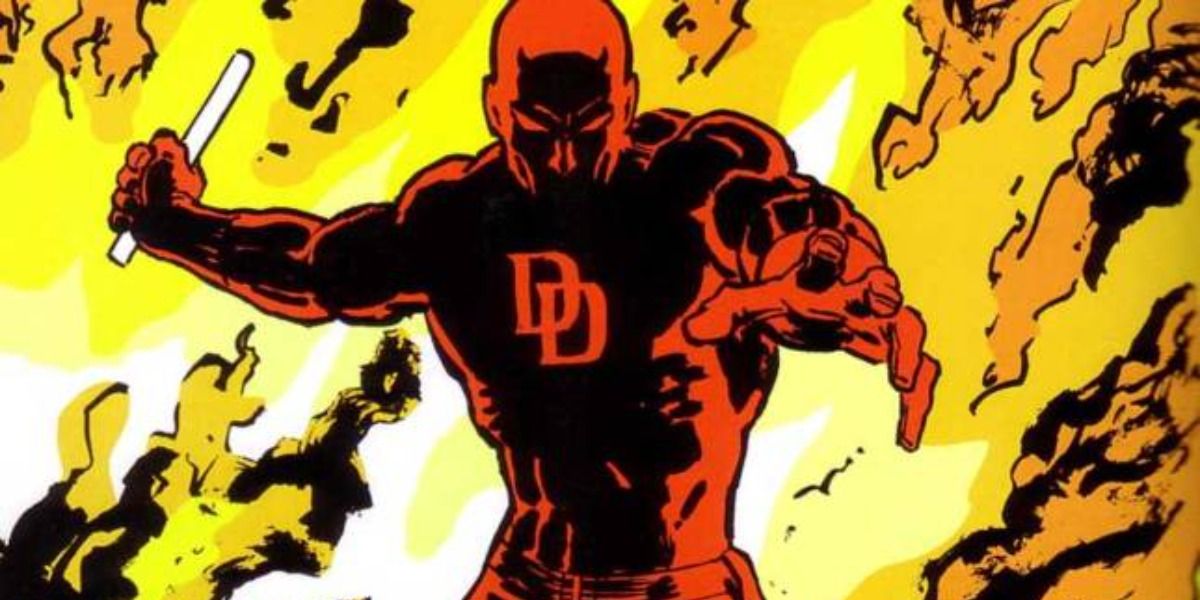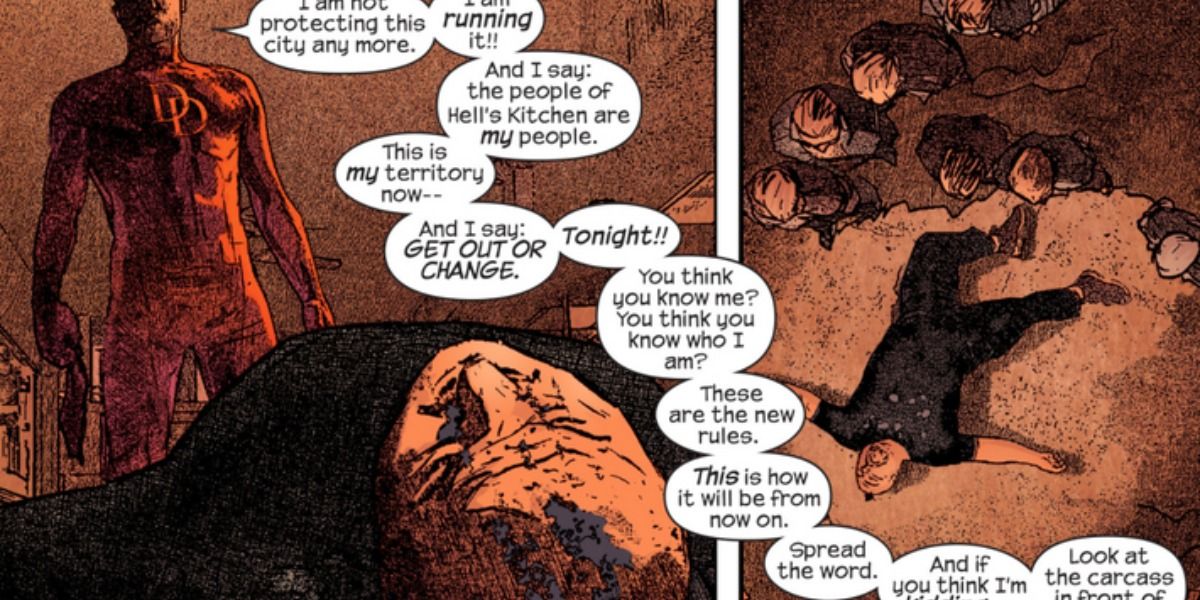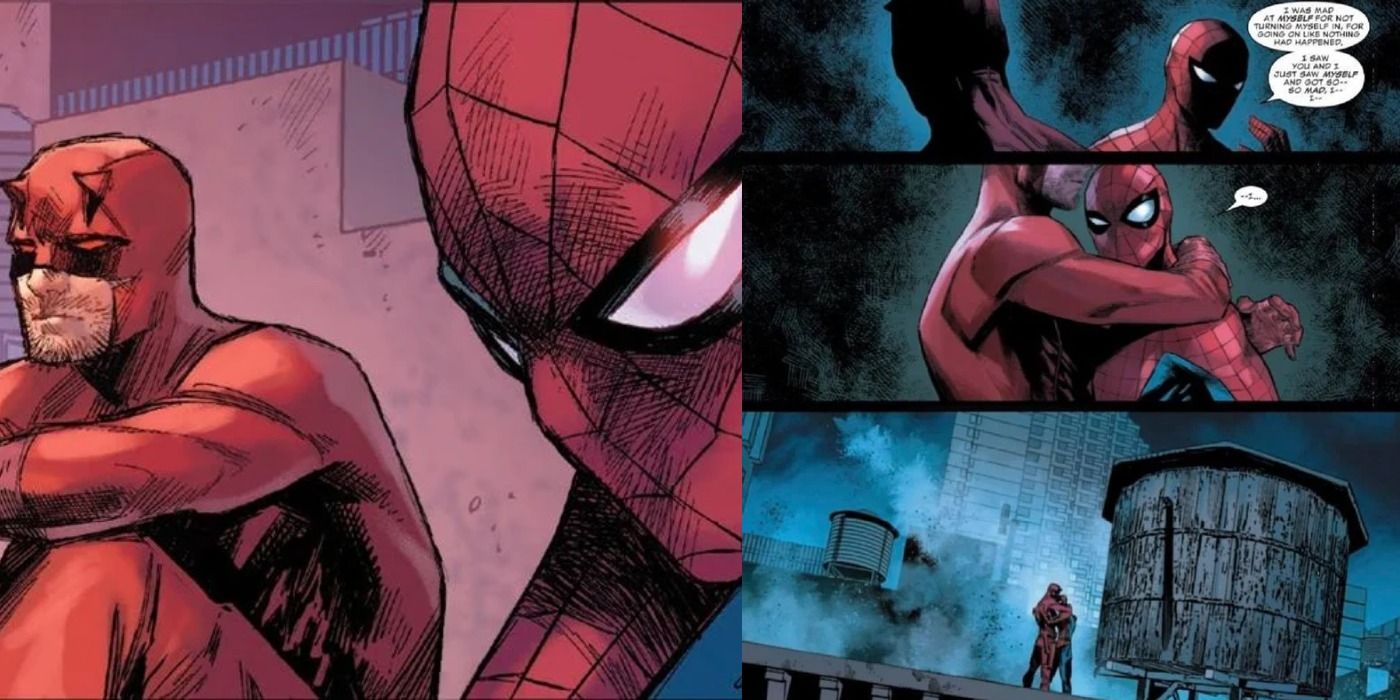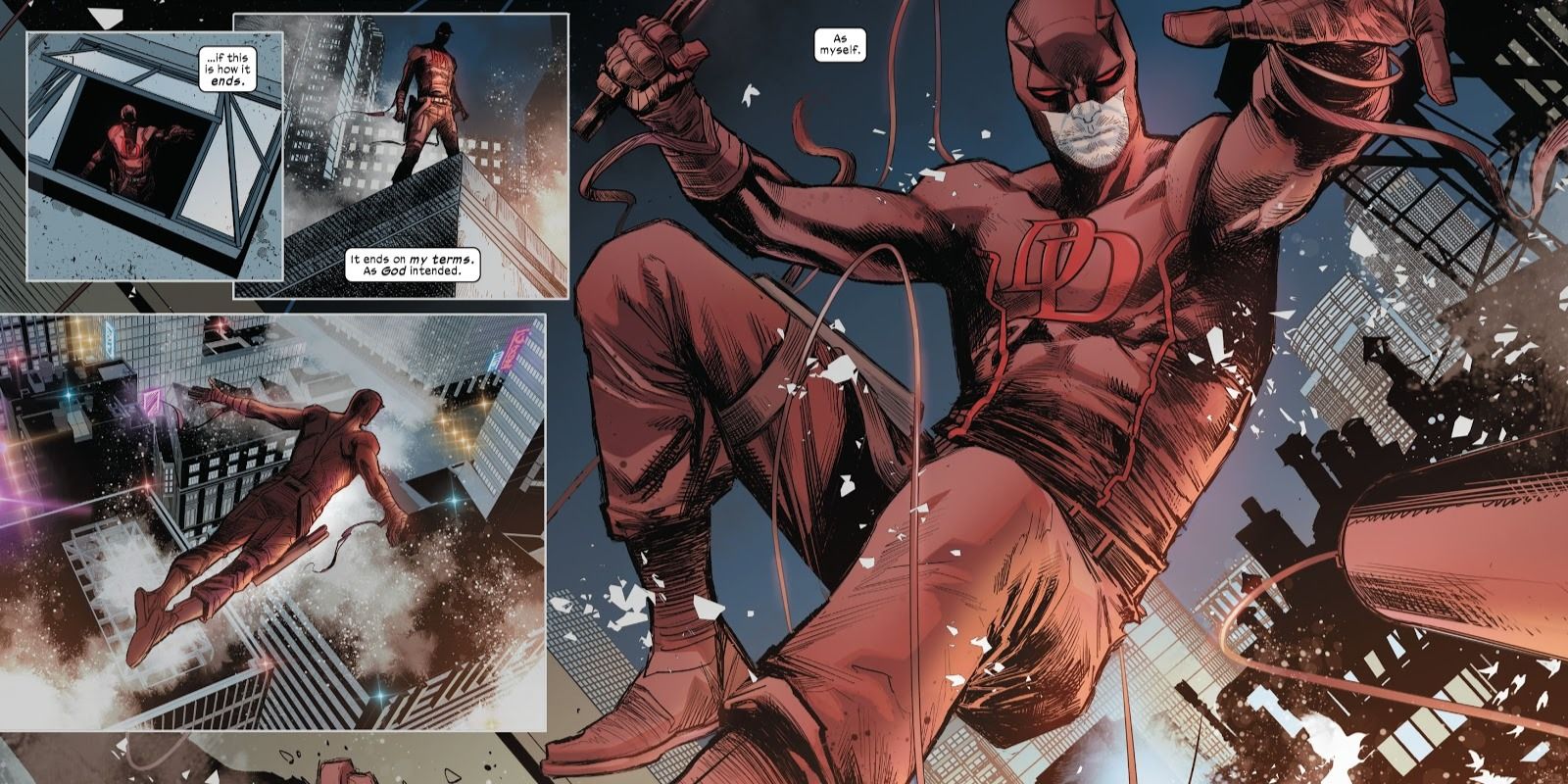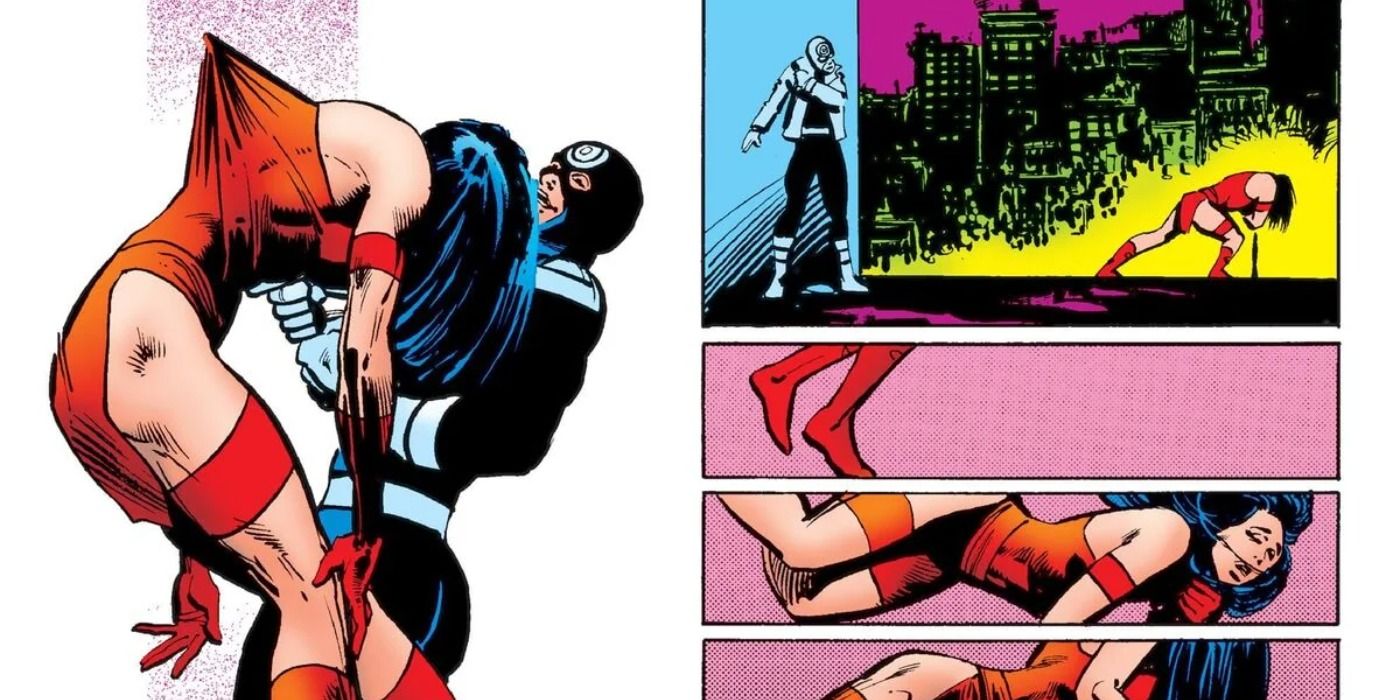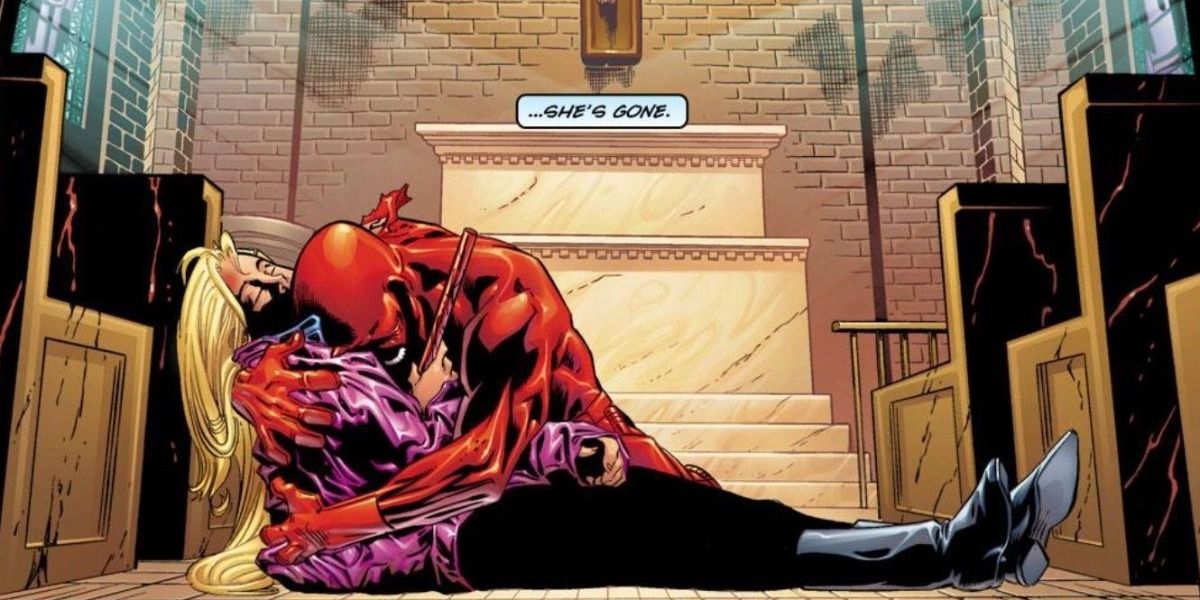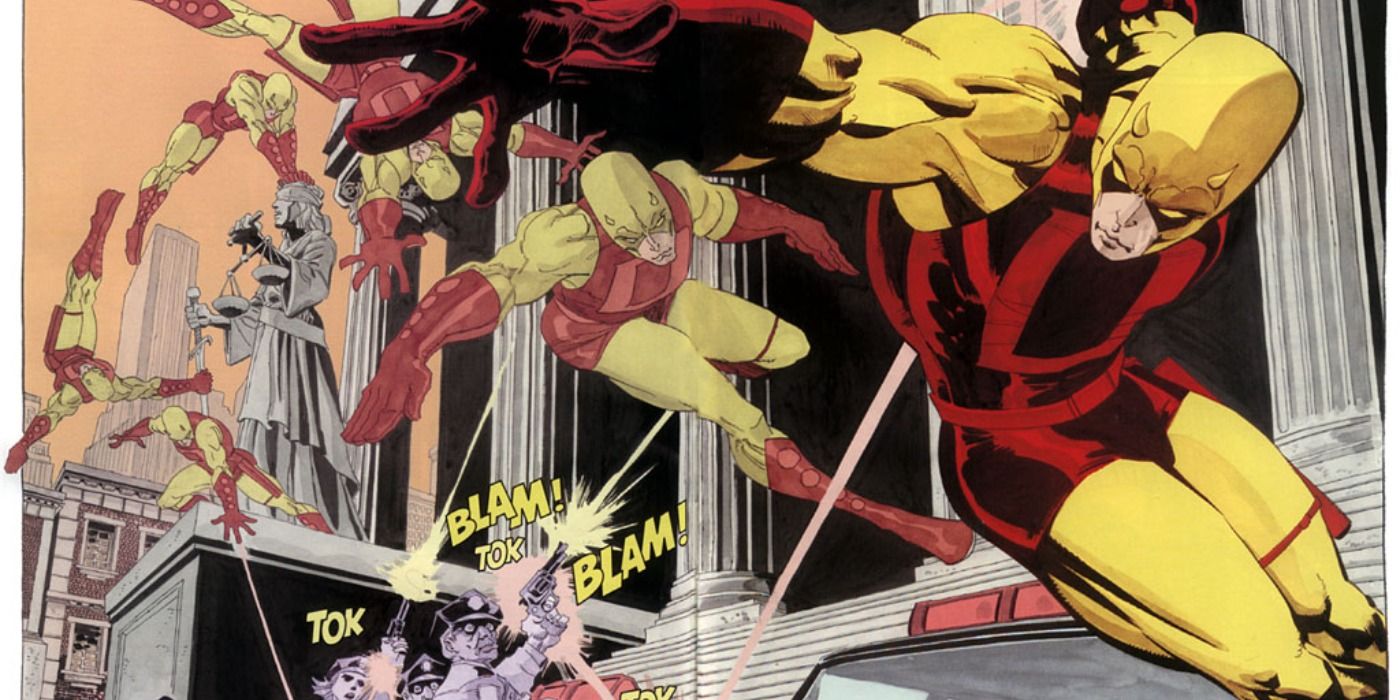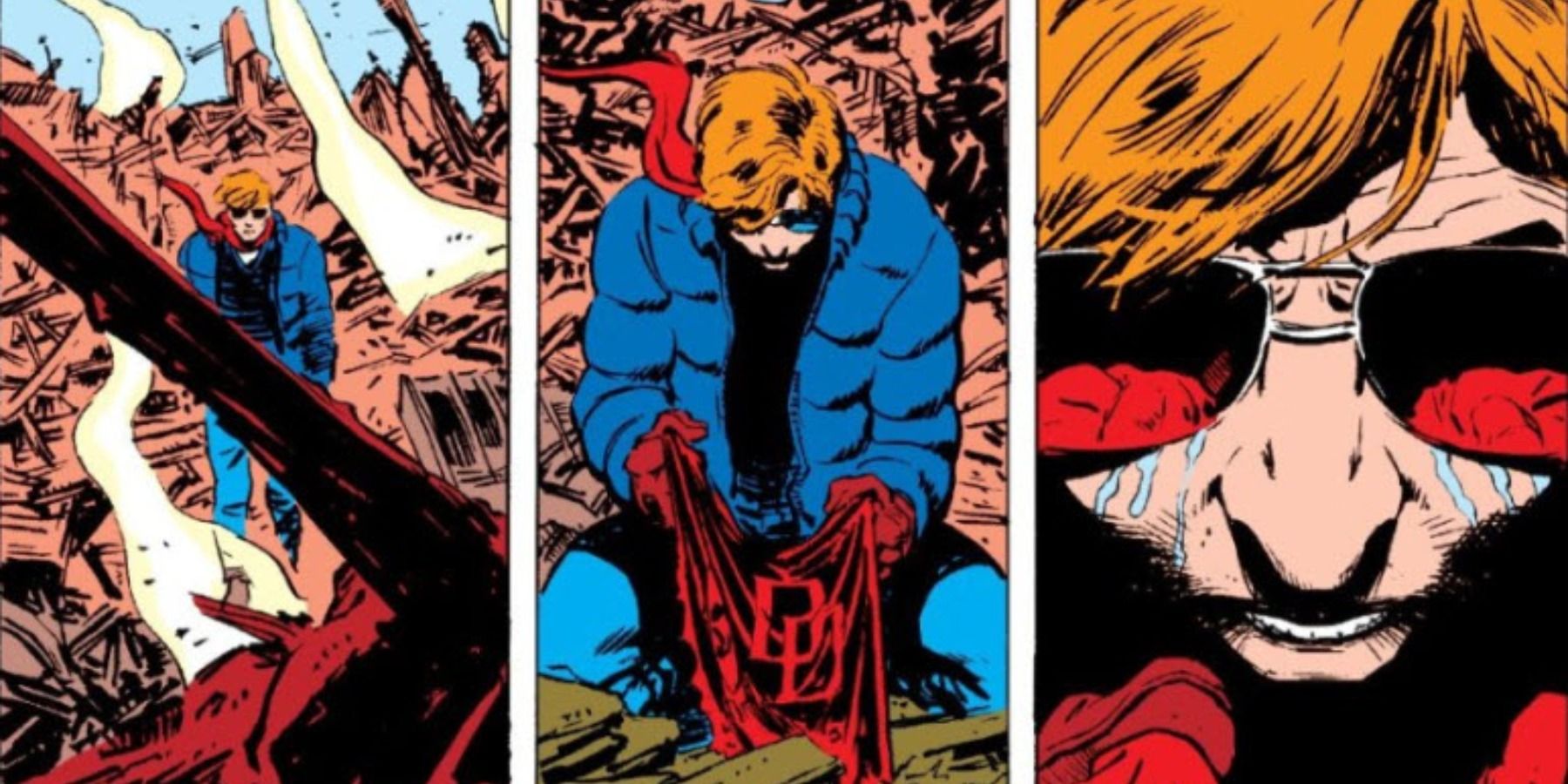Daredevil has the benefit of being arguably one of the most well-written superheroes in Marvel's vast library of comic book series, and perhaps even across the entire genre. The Netflix show provided a good spike in mainstream popularity for the character, especially since his last live-action outing was in the poorly-received 2003 movie.
With more eyes now drawn to his comics, fans are now seeing some of the most memorable moments from them that helped inspire the critically praised Daredevil TV show. Plenty of panels over the decades from his various series are masterfully executed scenes that emphasize the cathartic atmosphere in them.
Updated on March 23rd, 2022 by Guillermo Kurten: With Matt Murdock making his way into the MCU on the big screen in Spider-Man: No Way Home and Daredevil reportedly returning to the small screen, there hasn't been a more exciting time to be a fan of the Marvel hero. Now is also a great time to look back on the most famous panels from the comics that originally made the character so iconic.
"Who's Gonna Talk About Matt Murdock?" (Born Again)
Legendary writer Frank Miller started his rise to comic book stardom during Daredevil comic book issues in the 1970s--as an artist--and one of his crescendos with this character came in the Born Again story arc in the '80s. It tells a dark and intimate narrative for Matt Murdock, dealing with having his worst enemy in Wilson Fisk/Kingpin get a hold of his identity.
Fisk goes on to systematically tear down Matt's life as a civilian and as Daredevil. The panel with the Devil of Hell's Kitchen having beaten down a room full of thugs, desperately trying to uncover why his life has been dramatically crumbling, brilliantly highlights the downward spiral and palpable rage of a man becoming more and more dangerous.
"God Only Knows What It Looks Like" (The Man Without Fear)
In addition to Batman: Year One--commonly regarded as his definitive origin story--Miller also wrote what's generally accepted as Daredevil's definitive origin with artist John Romita Jr. in The Man Without Fear. It served heavily as an influence for Netflix's Daredevil season 1, right down to the makeshift black suit he wore before his main iconic one.
This arc tells the tragic origins of Matt's troubled childhood in the impoverished Irish neighborhoods of Hell's Kitchen and growing into dealing with the organized crime that plagues the city--and that killed his father. The last page and panel of the comic book present Daredevil now in his classic red suit, with the older yellow one trailing him as part of the transition. It's a beautiful and optimistic ending for this gritty crime-thriller story, teasing the legacy the character will go on to leave.
"I Promise" (Parts Of A Hole)
This panel from Parts of a Hole has become more relevant than ever given the more recent developments in the Marvel Cinematic Universe. Daredevil and Kingpin have made their reintroduction to the MCU in Spider-Man: No Way Home and Hawkeye, respectively. Likewise, Echo has received her first-ever live-action adaptation in a storyline similar to the Daredevil arc Parts of a Hole.
Kingpin takes in young Maya Lopez after he ordered the assassination of her father, raising her as an assassin and later pinning her father's death on Daredevil. Though it wasn't translated with the same impact onscreen, Echo shooting Fisk in the face and blinding him was a landmark comic book moment in her's and Daredevil's mythos.
"...But I'm The Devil" (Know Fear)
While the Netflix series' premature cancellation came across bitterly toward fans, a sort of consolation prize came in the form of Chip Zdarsky's current run on Daredevil, beginning in February 2019. Even though the character has enjoyed the aforementioned consistency in comics with quality writing, this run has been the most acclaimed in years. Starting in Know Fear, the arc starts off with the superhero's return to the mantle. His body hasn't acclimated physically from previous runs' climactic events and accidentally kills a robber as a result.
After some increasing guilt and a violent run-in with the police, the Punisher rescues him at the last second. Frank Castle/Punisher thinks he's finally found the moment to convince Daredevil to cross over to his side, but the latter refuses to believe he's descending further into violence. After frustratingly trying to reason with Castle, he breaks loose and orchestrates his escape using Punisher's own weaponry, taking his violent ego down a notch by declaring that if the Devil of Hell's Kitchen stooped down to his level, he'd be out of his league.
Daredevil Reborn (Born Again)
Though the Kingpin started out as a Spider-Man supervillain, he eventually became shared with and more known as being Daredevil's most infamous rogue. Vincent D'Onofrio's iteration of the character in the TV series helped bolster the reputation of this dynamic, but Born Again is a classic tale highlighting Daredevil and Kingpin's bitter, vitriolic rivalry.
Once the Man Without Fear rebuilds himself psychologically from Kingpin's violent mass smear campaign against him, he suits up again as Daredevil to stop Nuke--contracted by Fisk--in an immensely cathartic scene. The panel shows artist David Mazzucchelli once again portraying a panel that is simultaneously inspiring and haunting, signaling that this now is truly born-again Daredevil. It also serves as a great parallel, with Kingpin himself becoming increasingly more obsessed with killing Murdock after seeing him, time and again, rising above all of his hits.
The New Kingpin Of New York (Hardcore)
Brian Bendis and Alex Maleev's run on Daredevil was one of the most beloved tenures of the character in the 2000s and was even thought of as the best series since Miller's time. Bendis wrote a gripping crime drama that was accentuated well with Maleev's signature stylized, grittily realistic art style. By the time it gets to the Hardcore story arc, Matt is already dealing with an outed identity, murder charges, and more, leading him to hit his boiling point.
Daredevil has enough with all the nightmares Fisk has brought onto him and his loved ones, so he goes straight to him and brings out one of the most vicious physical beatdowns that the Kingpin has ever suffered. The biggest instance of Daredevil finally snapping, he displays Fisk's mangled unconscious body in front of his underlings, giving a bellowing and threatening speech declaring himself the new Kingpin of New York.
Heart-To-Heart (Truth/Dare)
Chip Zdarsky's aforementioned acclaimed run on Daredevil opens with the superhero in psychological turmoil over the man he accidentally killed. It left him grappling with whether he's fit to be Daredevil ever again, with even Spider-Man bluntly telling him to retire or the Wall-Crawler would turn him in himself.
However, after the circumstances change and the Devil of Hell's Kitchen triumphantly returns to form -- and is needed by Hell's Kitchen -- the two reconvene and have a much-needed heart-to-heart on the rooftops. Spidey apologizes for being so harsh and reveals that he felt this strongly at that moment because he, too, accidentally killed someone on the job. In that instance of vulnerability, Daredevil embraces him in a heartfelt, compassionate hug showing why they're such a great duo.
Back In Red (Truth/Dare)
In comics and in the show, Matt Murdock has been known to suffer both physical and mental hits that forced him out of his iconic red Daredevil suit. Zdarsky's run eventually leads him to do this here of his own volition after believing he can no longer, in good conscience, continue to wear the mantle after accidentally killing a man.
After some soul-searching and training under Elektra, he triumphantly returns as the Devil of Hell's Kitchen, red suit and all. He does so by simultaneously admitting guilt and complying with going to prison while spending his last days on the outside doing as much good as he can. The panel with him going out into the Kitchen again is a beautiful embrace of the character's personal growth and embrace of who he is.
Elektra's Death (Last Hand)
While Elektra certainly made out better than Karen Page, she still suffered greatly at the hands of the sadistic Bullseye. Miller was the writer who created the mysterious assassin, and he originally meant to close her arc in death before Marvel Comics thought otherwise.
She came back into Matt's life as a lethal and complex love interest, with her time culminating in a climactic fight with Bullseye. The two fought over who had the right to be the Kingpin's top assassin, and after the villain strikes the killing blow on her, she drags herself to Matt's apartment to die in his arms.
She's Gone (Guardian Devil)
Guardian Devil was a series by Kevin Smith that was praised for its deep use of religious themes and the philosophical questions it creates for Daredevil internally. It's an excellent premise for a Daredevil story, as he is a character with psychological complexities that would make for engaging moral stories.
However, the big shocking moment of Guardian Devil is when Bullseye--another of his arch-nemeses--kills Karen Page in a church using one of Daredevil's own billy clubs. She'd been a love interest for a long time at this point in the character's history, and while the treatment of Page as a character was reasonably brought into question, the panel with Matt holding and mourning over her lifeless body made for one of the most tragic and sympathetic Daredevil moments in comics.
Letters To The Deceased (Yellow)
In the wake of Karen Page's tragic death, Matt Murdock takes up Foggy's suggestion to write a letter to her to deal with his grieving process. In the process, he writes about his origins -- from his father's boxing career to assassination -- and how it compelled him to first take up the Daredevil mantle.
Jeph Loeb and Tim Sale -- of Batman fame -- put together Yellow as an emotionally resonant send-off story that's partly a tragic romance, with the comic balancing grounded themes of loss with the more upbeat and swashbuckling adventures of Daredevil's early years. As jarring as it is to see the combination of yellow with red, it was a landmark moment in Matt's life that hits harder with the context of losing Karen in the present.
The Kingpin's Magnum Opus (Born Again)
The first act of Born Again is used to build up and pile on the increasing burdens on Matt's life now that the Kingpin has bought his identity through the criminal underworld. His life falls apart as the IRS freezes his bank accounts, the bank forecloses his apartment, and he is being framed for criminal activity. The peak of this conflict, however, came when Matt finds that his apartment has been firebombed, with his Daredevil suit found torn up in the debris.
It's a signal to Matt that Fisk knows who he is, with Matt's internal dialogue admitting that this is the Kingpin's magnum opus against him, and he hardly needed to "sign" it. The following visuals are a somber and emotionally crushing series of panels, with closeups driving home that, at this moment, Matt Murdock is as broken as he's ever been. Seeing him wandering the streets then shows his even steeper decline. For a time, this is where Born Again turns into a revenge story that almost went wrong, and it's clear of it being the pivotal reference material for Daredevil season 3's story.

